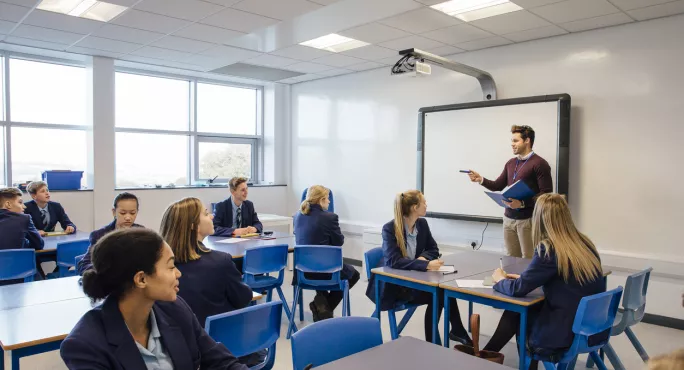Ensuring that you are meeting all of your students’ needs can be challenging at the best of times.
But when you have to consider students with impairments to their vision or hearing, that task becomes even more difficult.
SEND: Making mainstream school classrooms accessible to all
So how can you make your mainstream classroom accessible to those with complex sensory needs?
Reduce clutter
Many primary teachers try to create a welcoming learning environment by adding stimulating material to every available space, even the windows or ceiling. And although this benefits some children, it can be extremely confusing for a child with a visual impairment (VI).
Cluttered classrooms cause a child with a VI to tire quickly, even if they aren’t directly using the information put up around the classroom in their task. They will have to use their energy on filtering out what around them is or isn’t useful.
When planning your learning environment, think about what information is most important, use contrasting colours that stand out boldly against one another and ensure that each part of the display is clear and clutter-free.
Avoid talk and chalk
To sustain the flow of a lesson, teachers often continue to talk as they turn away from the class to jot down important information on the board. But this makes it really difficult for children with hearing impairments (HI) to understand what is being said.
Not only is your voice no longer being projected into the room, but you are also denying these students the ability to interpret what you are saying through body language cues. Avoid doing this if you can, or make sure to repeat yourself afterwards.
Pre-teach, pre-teach, pre-teach
When introducing new topics, concepts or vocabulary, ensure that a pupil with a VI or HI has had adequate opportunity to explore them multiple times before starting them with the rest of the class.
When the time comes to begin the new topic with the whole class, provide the pupil with vocabulary cards to help remind them of their prior learning and to encourage them to apply it in the lesson.
Consider positioning
This is very simple but easy to forget when writing out a seating plan for the millionth time. If a child has a “better side” in terms of their sensory impairment, ensure that their position within the classroom makes use of that better side.
Invest in matt laminating pouches
This is a simple but major change to make in a classroom with a child with a VI. When laminating, always use matt pouches; these don’t give off the same glare as gloss pouches and are therefore far easier to read.
Make sure your tech works
During the course of my postgraduate diploma in multisensory impairment (MSI), I visited many classes that claimed to be specialists in mainstream provision for children with sensory impairments. It was astounding how many of these so-called specialists left expensive, useful technology uncharged, broken or just didn’t know why or how to use it. Make sure that you get to know why it has been bought and how it is useful.
Close the door
My final tip is the simplest: close the door. This will dramatically reduce the extraneous auditory information that hearing people are able to just drown out. Children with HIs can find it very challenging to ignore additional noise, as a hearing aid amplifies all of the sound that it receives; it cannot distinguish “useful” noise from “distracting” noise like a human brain can.
It is amazing how loud a seemingly quiet room can become when using a hearing aid. Merely closing doors and windows during focused learning can really support a child with a hearing impairment.
Sian Cox-Aldridge is acting head of secondary school and multi-sensory impairment lead at Chailey Heritage School
